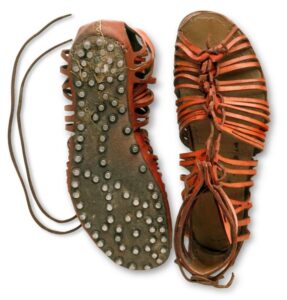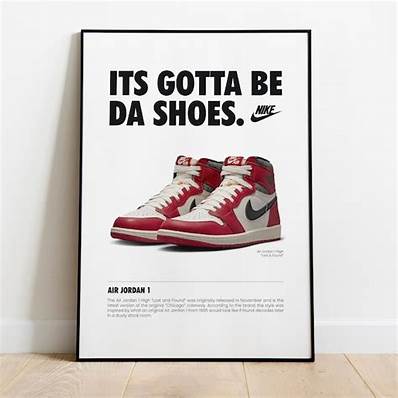Preaching About The Shoes
Preaching About the Shoes
If you are just joining this blog, you should be aware that we are in a series of posts on how to preach about spiritual warfare. In the last post we looked at the breastplate of righteousness, a key part of the armor that is provided for us to do battle with the Enemy. In this post we continue considering the armor of God by looking at preaching about the shoes that were part of the armor.
The Description of the Shoes
This is the way Paul puts it in Ephesians 6:
13 Therefore put on the full armor of God, so that when the day of evil comes, you may be able to stand your ground, and after you have done everything, to stand. 14 Stand firm then, with the belt of truth buckled around your waist, with the breastplate of righteousness in place,15 and with your feet fitted with the readiness that comes from the gospel of peace.
Back in the late ’80’s Michael Jordan was already considered the greatest basketball player in the history of the game.  Nike signed him to a contract and began to create advertisements to sell the Michael Jordan shoes. The title of one group of ads was this: It’s Gotta Be the Shoes! The implication was that if you had Michael Jordan shoes, you could play like he plays and do the things that he does on the basketball court.
Nike signed him to a contract and began to create advertisements to sell the Michael Jordan shoes. The title of one group of ads was this: It’s Gotta Be the Shoes! The implication was that if you had Michael Jordan shoes, you could play like he plays and do the things that he does on the basketball court.
In a sense, that was true for the Roman soldier. Some historians claim that it was the shoes of the Roman soldier that allowed them to win battle after battle.
The Literal Shoes.
 The Roman soldier’s shoe was called the caligulae. It was a sandal that fit tightly around the foot. But the real genius, as shown in the picture, was the studs that were put in on the bottom of the boot. That made it possible for the soldier to stand solidly while under attack. This was especially helpful when battling in close quarters, because one of the fight tactics was to push your shield against your enemy to try to knock him down.
The Roman soldier’s shoe was called the caligulae. It was a sandal that fit tightly around the foot. But the real genius, as shown in the picture, was the studs that were put in on the bottom of the boot. That made it possible for the soldier to stand solidly while under attack. This was especially helpful when battling in close quarters, because one of the fight tactics was to push your shield against your enemy to try to knock him down.
The implication is clear: the Enemy is going to attack. For you to stand and not be knocked down is vital in winning the battle. When you are preaching about the shoes in your church, make sure people know this.
The Figurative Shoes
There are two interpretations of what these shoes are for the believer.
The Shoes of Peace Are The Foundation for the Battle
The first interpretation is that the gospel of peace (that is, the good news that we are peace with God) gives us strength to stand firm against the Evil One. Here is how Paul puts it in Ephesians 2:
14 For he himself is our peace, who has made the two groups one and has destroyed the barrier, the dividing wall of hostility, 15 by setting aside in his flesh the law with its commands and regulations. His purpose was to create in himself one new humanity out of the two, thus making peace, 16 and in one body to reconcile both of them to God through the cross, by which he put to death their hostility. 17 He came and preached peace to you who were far away and peace to those who were near. 18 For through him we both have access to the Father by one Spirit.
In other words, our peace with God allows us to be at peace with others. We also have internal peace because we claim God’s righteousness when we sin. Preaching about the shoes of peace allows us to call for people to give up guilt and to build community. Here is a link to a commentary on these verses that allows you to see the various English translations if you’d like to explore this more.
The Shoes Represent the Willingness to Share the Gospel
Here is how Peter put it in his first letter:
 But in your hearts revere Christ as Lord. Always be prepared to give an answer to everyone who asks you to give a reason for the hope that you have. But do this with gentleness and respect. I Peter 3:15
But in your hearts revere Christ as Lord. Always be prepared to give an answer to everyone who asks you to give a reason for the hope that you have. But do this with gentleness and respect. I Peter 3:15
In other words, your readiness to share the Gospel of Peace with people is what makes you ready to do battle with Satan.
When I read this, I remember talking to one of our neighbors. She was a Palestinian who lived across the street when I was still living at home. My mother was hoping to lead her to believe in Jesus, and so, had developed a friendship with her. One day the neighbor was at our house, and learned that I was going to go to seminary to be a pastor/preacher. She asked me something that no one else had asked. She asked, “why?” I stumbled through an explanation, but went to my room and got on my knees asking for forgiveness. I was at the point of battle, and failed.
Are you ready?
Which Explanation?
So, which of these two possibilities is the right interpretation? We don’t really know. So, when y9u preach about the shoes, use both.


